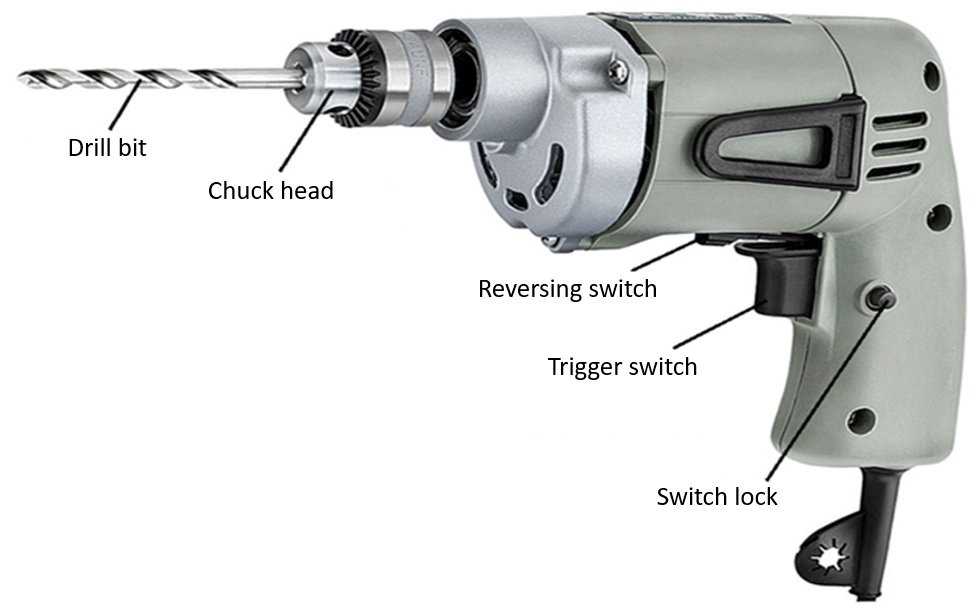Drill
The drill creates cylindrical holes in the material by rotating the drill bit. There are two types of electric drills, corded drills powered by an electrical source and cordless drills powered by batteries.
Corded drills are a good choice when moderate power is needed or if extended drilling is required.
If you need to work away from an electrical outlet, or if your project means you’re working in confined spaces, cordless drills are convenient for such work.
Corded and cordless drill
The drill consists of an electric motor, a handle and a chuck.
The power of the drill depends on the power of the electric motor and is expressed in W.
There is a start switch on the handle, which is also a speed regulator (trigger). There is also a forward/reverse switch on the handle.
The chuck is used to mount the drill bit. It defines the largest diameter of the drill bit that can be mounted and used for drilling.
There are also special hammer drills that have provided hammer-like action that drills through thick, solid surfaces. such as concrete, wall, stone and brick.
A drill bit is a cutting tool to create holes. The upper part of the drill bit is of a smooth cylindrical shape which is used for fastening on the chuck. The cutting part of the drill bit is in the shape of a spiral, and the top is adapted for cutting material. The drill turns the drill bit, which gradually, axially enters the hole. The spiral serves for chip removal.
Drill bits vary in size (diameter) and construction. Depending on the material being drilled, there are different drill bits and they differ according to the construction of the top. This is how we distinguish drill bits for metal, wood and concrete.







